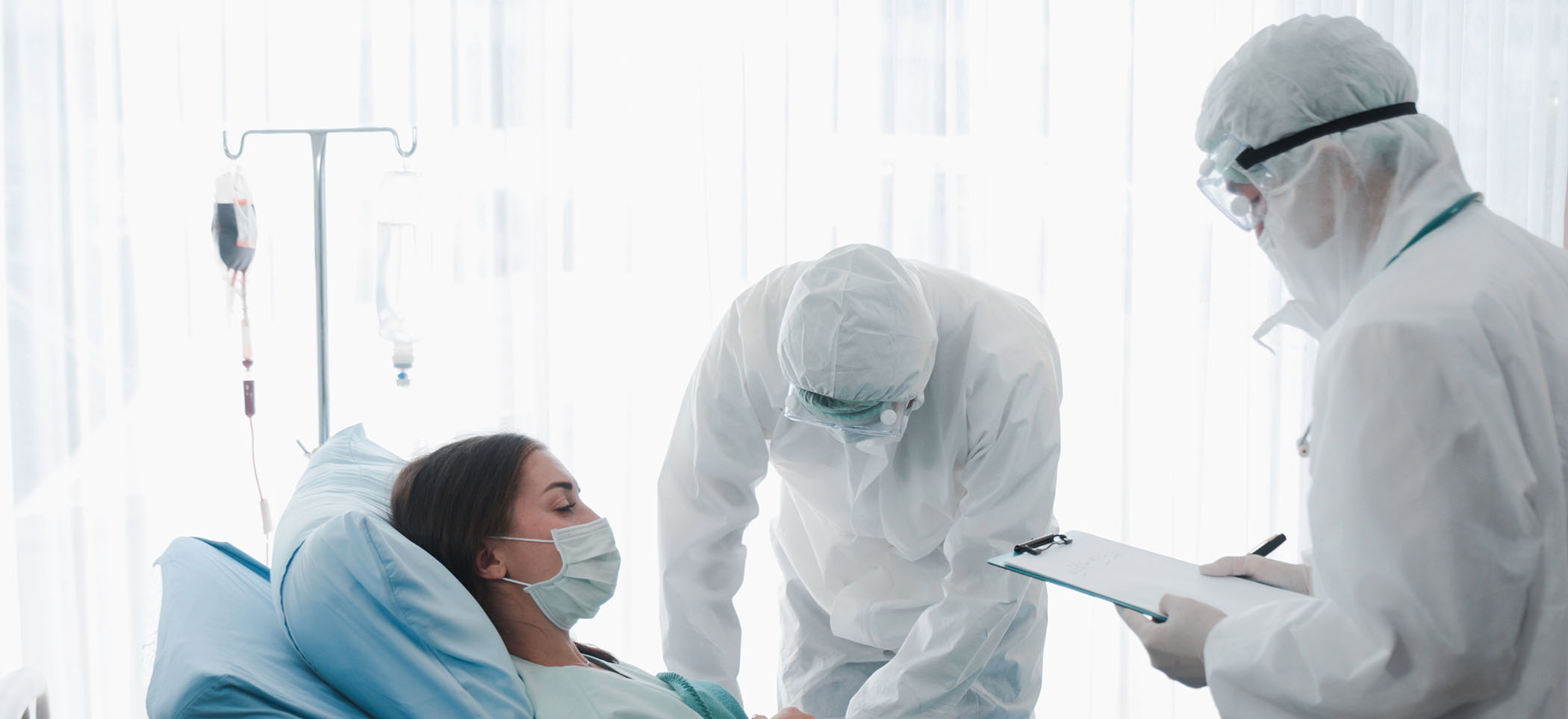
Communicable Diseases
We offer tips to stay healthy, as well as when and who you need to notify at the College if you contract a contagious illness.
Tips to Stay Healthy
Sick? Stay Home
Disinfect Surfaces
Keep Your Hands Clean
Don’t Touch Your Face
Cover Your Coughs
Notifiable Conditions
Chickenpox is a highly contagious disease that can cause an itchy, blister-like rash. The rash first appears on the chest, back, and face, and then spreads over the body. Chickenpox can be serious, especially in babies, adolescents, adults, pregnant women, and people with weakened immune systems. The best way to prevent chickenpox is to get the chickenpox vaccine.
A contaminated sharp is any contaminated object that can penetrate the skin, including needles, scalpels, broken glass, broken capillary tubes, and exposed ends of dental wires. Contaminated sharps injury occurs with a sharp used or encountered in a health care setting that is contaminated with human blood or body fluids.
Symptoms of COVID-19 can appear anywhere from two to fourteen days after exposure to the virus, and may include mild to severe symptoms, including fever, cough, fatigue, and new loss of taste or smell. If you test positive, please follow the CDC’s isolation guidance.
People can get Legionnaires’ disease or Pontiac fever when they inhale tiny droplets of water in the air that contain Legionella. While it’s unusual for people to spread Legionnaires’ disease to other people, it is possible. Legionella occurs naturally in freshwater environments, like lakes and streams. It can become a health concern when it grows and spreads in human-made building water systems.
Measles is an acute viral respiratory illness. It is characterized by fever, malaise, cough, cold-like symptoms, and conjunctivitis–the three “C”s–followed by a rash. The rash usually appears about 14 days after a person is exposed. The rash spreads from the head to trunk to lower extremities. Patients are contagious from four days before to four days after the rash appears.
Meningococcal disease refers to any illness that’s caused by bacteria called Neisseria meningitis. These illnesses are often severe, can be deadly, and include infections of the lining of the brain and spinal cord (meningitis) and bloodstream.
The mpox virus is part of the family of viruses as the variola virus, which causes smallpox. Monkeypox symptoms are like smallpox but milder, and monkeypox is rarely fatal. Monkeypox is not related to chickenpox.
Mumps is a viral illness caused by a paramyxovirus, a member of the Rubulavirus family. The average incubation period for mumps is 16 to 18 days. Mumps usually cause pain, tenderness, and swelling in one or both parotid salivary glands (cheek and jaw area). Swelling usually peaks in one to three days and subsides the following week.
Pertussis, a respiratory illness commonly known as whooping cough, is a very contagious disease caused by a type of bacteria called Bordetella pertussis. These bacteria attach to the cilia (tiny, hair-like extensions) that line part of the upper respiratory system. The bacteria release toxins (poisons), which damage the cilia and cause airways to swell.
Polio, or poliomyelitis, is a disabling and life-threatening disease caused by the poliovirus. The virus spreads from person to person and can infect a person’s spinal cord, causing paralysis (inability to move parts of the body). Poliovirus is very contagious and spreads through person-to-person contact. It lives in an infected person’s throat and intestines. Most people infected with poliovirus (about 72 out of 100) will not have visible symptoms.
Rabies is a preventable viral disease usually transmitted through the bite of a rabid animal. The rabies virus infects the central nervous system of mammals, ultimately causing disease in the brain and death. Most rabies cases reported to the Centers for Disease Control and Prevention each year occur in wild animals like bats, raccoons, skunks, and foxes, although any mammal can get rabies.
Rubella is a contagious disease caused by a virus. Most people who get rubella usually have a mild illness, including a low-grade fever, sore throat, and a rash that starts on the face and spreads to the rest of the body. Rubella can cause a miscarriage or severe congenital disabilities in a developing baby if a pregnant woman is infected. The best protection against rubella is the MMR (measles-mumps-rubella) vaccine.
Tuberculosis (TB) is caused by a bacterium called Mycobacterium tuberculosis. The bacteria usually attack the lungs, but TB bacteria can attack any part of the body, such as the kidney, spine, and brain. Not everyone infected with TB bacteria becomes sick. As a result, two TB-related conditions exist: latent TB infection (LTBI) and TB disease. If not treated properly, TB disease can be fatal.

Prepare for Flu Season
College Policies and Procedures
Policy III.3008.B (pdf)
This policy defines communicable diseases and outlines the procedures that members
of the San Jacinto community should follow if they contract one.
Procedure III.3008.B.a (pdf)
This procedure details how San Jacinto College responds to a communicable disease
incident involving a student, employee, or other individual who attends a College
function, event, program, activity, or meeting.
Procedure III.3008.B.b (pdf)
During a public health emergency, San Jacinto College will take all necessary measures
to ensure that the spread of an infectious or contagious disease is managed, following
the appropriate countermeasures recommended by public health officials of the appropriate
jurisdictional agencies.
